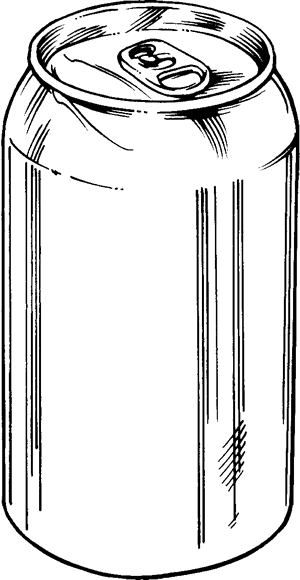
Unearthing Ancient Pathways: Your Quest for Native American Maps Begins at the Library of Congress
For the intrepid traveler with a passion for history, culture, and the untold stories etched into landscapes, the quest for old Native American maps is an expedition into the very soul of North America. These aren’t just lines on parchment; they are windows into ancient worldviews, territorial claims, migration routes, and the profound connection Indigenous peoples held with their lands long before colonial borders were drawn. If your travel plans include a deep dive into this rich heritage, and you’re asking, "Where can I find old Native American maps?", then your ultimate destination, a veritable mecca for such treasures, is undeniably the Library of Congress in Washington, D.C.
This article isn’t about vague suggestions; it’s a direct guide to navigating one of the world’s largest and most comprehensive repositories of human knowledge, focusing specifically on its unparalleled offerings for the seeker of Indigenous cartography. We’ll explore not just the Library of Congress itself, but also how it serves as a cornerstone for understanding the broader landscape of Native American map discovery, touching upon complementary institutions that enhance the journey.
The Library of Congress: A Cartographic Mecca

Imagine a place where over 5.5 million maps and atlases reside, charting everything from the celestial spheres to the minutiae of a single city block. This is the Geography and Map Division of the Library of Congress (LOC), an institution that stands as the preeminent destination for anyone serious about historical cartography, and crucially, Native American maps.
Located in the magnificent Thomas Jefferson Building, the LOC is more than just a library; it’s a living archive, a monument to human intellectual endeavor. For our specific pursuit, its vast holdings represent centuries of documentation, albeit often through a colonial lens, that nonetheless offer invaluable insights into Native American lands, cultures, and interactions.
The Geography and Map Division: Your Starting Point
Upon entering the hallowed halls of the LOC, your first port of call should be the Geography and Map Division. Here, within climate-controlled vaults and expansive reading rooms, lies a treasure trove that directly addresses your quest. The collections are diverse, ranging from early European expeditionary maps attempting to chart "new" territories, to colonial surveys marking out contested lands, to a smaller but incredibly significant number of maps either drawn by Native Americans or based directly on their geographical knowledge.

What makes this division so crucial for Native American maps?
- Early Exploration and Contact Maps: These often depict tribal territories, village locations, and trade routes based on initial European encounters. While frequently inaccurate and culturally biased, they are primary historical documents showing early perceptions and interactions.
- Treaty Maps: A significant portion of the collection includes maps drawn or referenced during treaty negotiations between Native American nations and European powers or the U.S. government. These maps are critical for understanding land cessions, reservations, and the legal history of tribal sovereignty.
- Military and Expeditionary Maps: As the U.S. expanded westward, military and scientific expeditions generated countless maps detailing topography, natural resources, and, inevitably, the locations of Native American communities and their lands. These often include detailed observations of cultural landscapes.
- Linguistic and Ethnographic Maps: Later collections include maps attempting to delineate linguistic groups, cultural areas, and population distributions of various Native American nations, offering a different kind of spatial understanding.
- Indigenous Cartographic Influences: While rare, some maps in the collection were either drawn by Native Americans (e.g., pictographic maps, hide maps, or early attempts at Western-style cartography) or were heavily influenced by Indigenous knowledge passed on to European mapmakers. These are particularly valuable as they offer a glimpse into Native perspectives on their own geographies.
The experience of visiting the Geography and Map Division is one of hushed reverence and intense discovery. Researchers register for a reader card, and once approved, gain access to the reading room. Here, you can request specific maps from the extensive catalog, often available in digital form for initial browsing, but with the option to view the original physical artifacts (under strict supervision, of course). Holding a map from the 17th or 18th century, knowing that it once guided explorers or marked a pivotal land claim, is an unparalleled experience.
Beyond the Map Division: Contextualizing the Cartography

While the Geography and Map Division is your primary target, the true power of the Library of Congress lies in its interconnectedness. Native American maps rarely exist in a vacuum; they are products of historical events, cultural understandings, and political maneuverings. To fully appreciate them, you need context, and the LOC offers this in abundance:
- Manuscript Division: Here you’ll find original journals, letters, and documents from explorers, missionaries, military officers, and government officials. These often contain written descriptions of Native American lands, customs, and encounters that directly complement the visual information on maps. Imagine reading a firsthand account of a journey and then seeing the map that guided it.
- Prints & Photographs Division: This division holds vast collections of early photographs, engravings, and artwork depicting Native American peoples, their settlements, and the landscapes they inhabited. These visual records provide invaluable cultural context and a human dimension to the territorial outlines on maps.
- American Folklife Center: This center documents and preserves American folk traditions, including a wealth of Native American oral histories, music, and cultural expressions. While not directly cartographic, these resources deepen your understanding of Indigenous relationships to land and place, which informed their own "mental maps" and sacred geographies.
- Law Library: Given the importance of treaties and land claims, the Law Library houses legal documents, legislative histories, and court cases that illuminate the legal frameworks surrounding Native American territories, often with direct reference to the maps used in these proceedings.
By exploring these complementary divisions, you transform your map quest from a mere visual exercise into a holistic historical and cultural investigation.
The Digital Frontier: Pre-Visit Research and Virtual Exploration
Before you even set foot in Washington, D.C., the Library of Congress offers an immense digital gateway to its collections. This is crucial for planning your visit and maximizing your research time.
The LOC’s online catalog and digital collections are incredibly robust:
- Online Catalog: Use keywords like "Native American maps," "Indian territories," "tribal lands," or specific tribal names (e.g., "Cherokee map," "Lakota territory") to search the Geography and Map Division’s holdings. You’ll find catalog records, and often, high-resolution digital images of the maps themselves.
- Digital Collections: Many of the most significant and frequently requested maps have been digitized and are available for free viewing and download. This allows you to explore vast numbers of maps from your home, identify specific items you wish to see in person, and conduct preliminary research.
- Story Maps and Exhibitions: The LOC website also features online exhibitions and "Story Maps" that curate collections around specific themes, including Native American history and cartography, offering guided pathways into their holdings.
Leveraging these online resources beforehand is not just a convenience; it’s a necessity. It allows you to create a targeted list of maps you wish to examine, understand their historical context, and prepare specific questions for the reference librarians, who are experts in navigating the physical collections.
Beyond the LOC: Expanding Your Map-Hunting Itinerary
While the Library of Congress is the undisputed heavyweight, your quest for old Native American maps can extend to other remarkable institutions, often with different strengths and regional focuses. Consider these as essential additions to your "map-hunting" itinerary:
- Smithsonian National Museum of the American Indian (NMAI), Washington D.C. & New York City: While not primarily a map archive, NMAI is crucial for understanding the cultural context of Native American geographies. Its exhibitions often incorporate maps or cartographic elements, and its research center can provide invaluable background on the Indigenous peoples depicted in historical maps. It’s an essential visit for cultural immersion.
- National Archives and Records Administration (NARA), Washington D.C.: The National Archives holds the official records of the U.S. government, including a wealth of maps related to Native American treaties, land cessions, surveys, and military engagements. These are often the original, signed documents, offering a different legal and administrative perspective than the LOC’s more general cartographic collection.
- The Newberry Library, Chicago, Illinois: A true gem for anyone interested in Indigenous history and cartography. The Newberry’s Edward E. Ayer Collection is world-renowned for its extensive holdings of Native American materials, including a significant collection of maps, atlases, and related manuscripts. They specialize in early European contact and the history of the American West, making it a critical destination for understanding the cartographic history of Indigenous peoples in those regions. Their focused expertise and accessible research environment make it a highly recommended visit.
- University Special Collections: Many major universities across the U.S. house impressive special collections with strong holdings in early American history and Native American studies. Examples include Yale University’s Beinecke Rare Book & Manuscript Library, Harvard’s Houghton Library, and the University of Oklahoma’s Western History Collections. These often have regional strengths or specific collections acquired from explorers, ethnographers, or government officials. A quick search of a university’s library catalog can reveal hidden treasures.
- State Historical Societies and Museums: For maps specific to a particular state or region, state historical societies and museums are invaluable. They often hold local surveys, early settlement maps, and documents pertaining to specific Native American nations within their geographical area.
Planning Your Expedition: Practical Advice for the Map Seeker
Embarking on this journey requires preparation to make the most of your time and respect the invaluable materials you’ll encounter.
- Register in Advance: For the Library of Congress and other major research institutions, you will need to register for a reader card. This usually involves showing photo identification and filling out a form. Some institutions allow pre-registration online.
- Research, Research, Research: As mentioned, use online catalogs and digital collections to identify specific maps or collections you want to view. Note down call numbers or accession numbers. This will save you immense time in the reading room.
- Understand Access Rules: Each division and institution will have specific rules for handling rare materials. This typically includes no pens (pencils only), no food or drink, and often restrictions on bags or coats. Photography is sometimes permitted without flash, but always check first.
- Be Patient and Respectful: Working with archival materials requires patience. Maps may need to be retrieved from off-site storage, and the process of handling fragile documents is meticulous. Librarians and archivists are experts; listen to their guidance.
- Bring the Right Tools: A notebook and pencil, a camera (if permitted), and potentially a tablet or laptop for notes are essential. Dress comfortably, as you might be sitting for extended periods.
- Embrace the Journey: The search for old Native American maps is more than just finding a document; it’s about connecting with history, understanding different perspectives, and appreciating the profound stories these maps tell about land, people, and time.
The Unfolding Narrative
The quest for old Native American maps is a deeply rewarding endeavor. It’s a journey not just across physical space, but through time, revealing the complex, often challenging, but ultimately resilient narrative of Indigenous peoples on this continent. The Library of Congress, with its vast collections and dedicated staff, stands as the paramount starting point for this crucial exploration. By understanding its offerings and complementing your visit with other key institutions, you embark on an expedition that promises not just cartographic discovery, but a profound connection to the ancient pathways that shaped North America. So pack your bags, prepare your mind, and step into the stories waiting to be unfolded on parchment, right there in the heart of Washington, D.C. and beyond.
